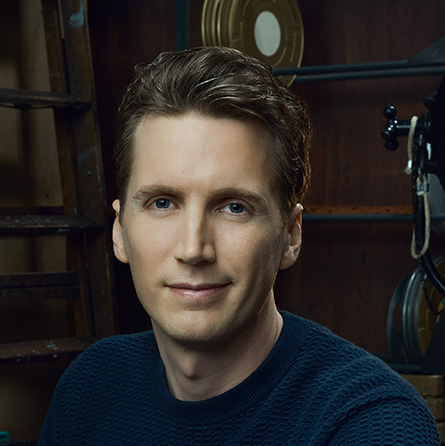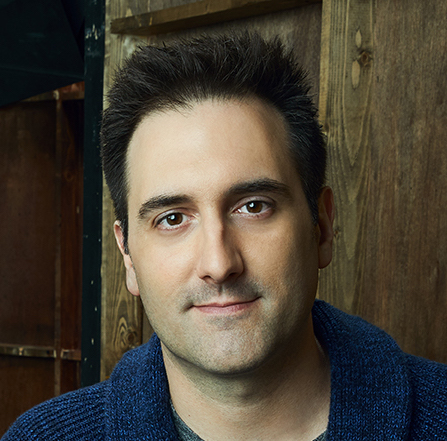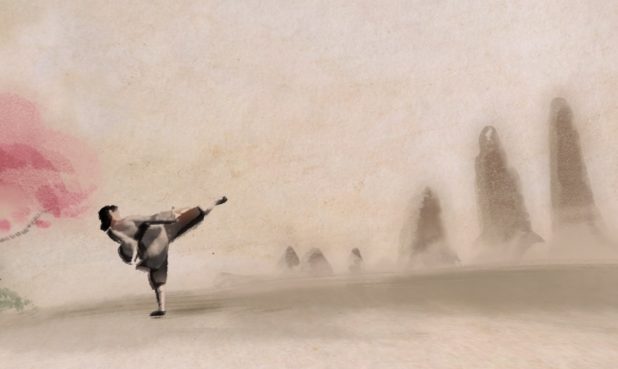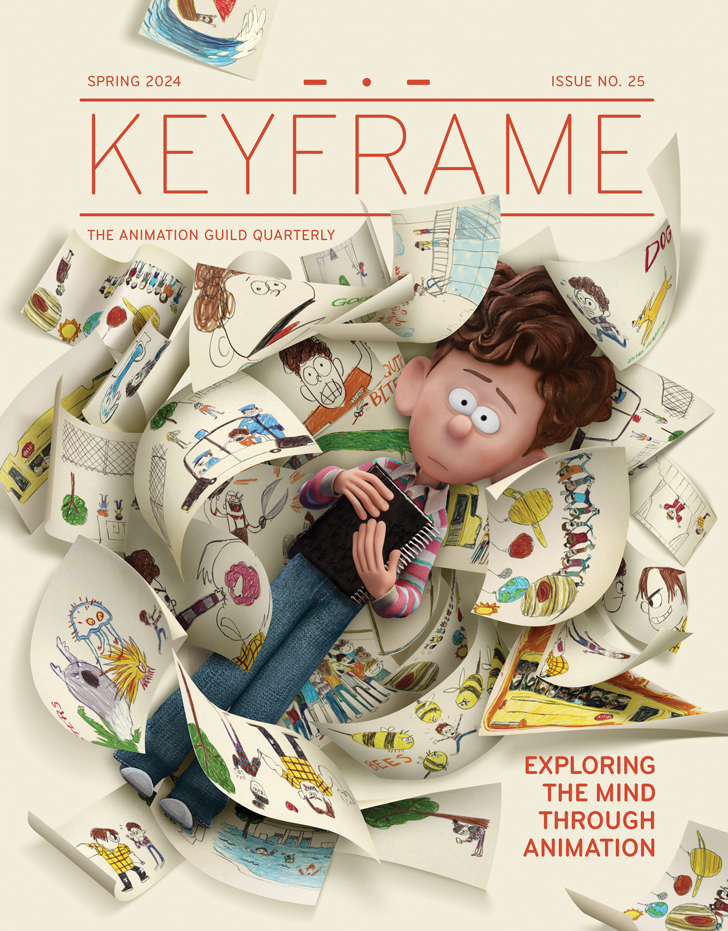 Photo by Ricky Middlesworth.
Photo by Ricky Middlesworth.Riannon Delanoy
Songs to Sing in the Dark
“One of the biggest hurdles we had to overcome on Songs to Sing in the Dark was how to combine the 2D and 3D elements in a convincing way onscreen, so we adopted a philosophy to intersect the two mediums in style and pipeline as much as possible. The grain on both gives the entire short a unifying ‘sonogram’ feel; the 2D animation was placed in Maya so the animators could go back and forth between the drawings, the rig, and the camera, adjusting things in tandem; effects artists turned the drawings themselves into light-emissive objects that were used to light the 3D scenes; and the lighters had a dense, layered compositing approach which allowed us to tinker with all kinds of things in the epicenter of each sound field—like refraction, hue, chromatic separation, and tone intensity. The more we could blur the line between the 3D objects in Maya and what was painted on the frame, the better the final effect became.”

 Photo by Ricky Middlesworth.
Photo by Ricky Middlesworth.Jacob Frey
Going Home
“Early on, there were quite a few concerns in terms of complexity in this short. We needed to create an entire European city from scratch, populate it with crowds, and then have everything switch through four different seasons, which required additional customizations. The crowds and the main characters also needed to change clothes, which required a bigger wardrobe. With all this in mind, it was crucial for us to streamline the process as much as possible prior to the start of production. We chose the painterly look that Alex Cazals (lighting) and Hans Keim (look dev environments) developed, so we were able to create a basic brushstroke texture that we could apply to all buildings and then tint the color to give each building variety. Shaun Absher modeled only a handful of buildings, which allowed us to populate the entire city.”

 Photo by Ricky Middlesworth.
Photo by Ricky Middlesworth.Ryan Green
Crosswalk
“Visually, we wanted to try something a little out of the norm for Disney Animation—to make a film that was inspired by stop-motion animation with characters that were more cartoon-like in proportion and design. When animation started, we hadn’t yet decided to animate on 2’s (with the image held for two frames), which made it tricky to format some of the shots, later, from 1’s (with keys, arbitrarily, on odd or even frames). Bobby Huth, our animation lead, was super helpful in working with the team to retrofit the footage, as well as [teaching us] how to keep that punchy stop-motion look moving forward.”


Kim Hazel
Dinosaur Barbarian
“So many of the things I love most about Dinosaur Barbarian were born as an idea or solution from an inspired crew member. Animator Nathan Engelhardt came up with an amazing idea for the ‘washing dishes’ shot to add way more energy and make the camera more dynamic. He mocked up the shot using blocky shapes in Maya, and used that as a guide for his hand-drawn animation. Did I mention this was Nathan’s first time animating in 2D professionally? It still blows my mind every time I see it!”


Liza Rhea
No. 2 to Kettering
“One of the big challenges of creating No. 2 to Kettering was trying to fill a bus full of original-looking background characters. Working closely with our talented team, I learned that there are so many ways to do this without having to design and create many new character models. We took the approach of reusing characters from other Disney Animation films and manipulating them using blended shapes to modify their form and structure and surfacing for skin tone and costumes. I’m super happy with the results for our background characters, as I feel they look different from any other Disney film.”








.png)